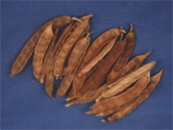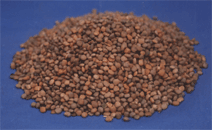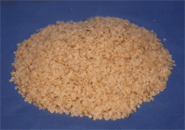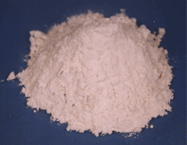|
Guar, (Cyamopsis
Tetragonolobous (Linn) Taub) is a pod bearing plant
 belonging to
the Lagiminosae Family. It is a crop growing in semi arid – sub
tropical areas spread over north-north western India and
east-south eastern Pakistan. Being a monsoon crop, it requires
rain in more than 2 spells and is harvested in September-October-
November. belonging to
the Lagiminosae Family. It is a crop growing in semi arid – sub
tropical areas spread over north-north western India and
east-south eastern Pakistan. Being a monsoon crop, it requires
rain in more than 2 spells and is harvested in September-October-
November.
History of Guar : Guar was originally used as a cattle feed
full of proteins. Later on, it was discovered that the gum derived
from Guar seeds is much superior than that of Locust Beans. The
technology of extracting gum from Guar was commercialised in 1953
in the US and then a decade later in India. Because of its basic
characteristic of being a natural polymer, in early days, Guar gum
was used more in the paper industry. It has now been accepted
widely in various industries where it is used as a viscosifier,
thickener, binder, gelling agent, stabilizer, emulsifier,
flocculant, water holding agent etc…
About Guar Gum : Small Guar plants are either cut from the
stem or uprooted and dried in the
 sun. Seeds are then extracted
from the pods of these plants either mechanically or manually on
the farm itself. Guar gum is obtained from ground endosperms of
these seeds. It consists mainly of a high molecular weight hydro
colloidal polysaccharide, composed of glactan and mannan units
combined through glycodisic linkages, which can be described
chemically as Glactomannan. sun. Seeds are then extracted
from the pods of these plants either mechanically or manually on
the farm itself. Guar gum is obtained from ground endosperms of
these seeds. It consists mainly of a high molecular weight hydro
colloidal polysaccharide, composed of glactan and mannan units
combined through glycodisic linkages, which can be described
chemically as Glactomannan.
Properties of Guar gum like

Produces high viscosity even at low concentration (3500-4000
cps in 1 solution) Non-ionic and maintains a high viscosity over a broad range of
pH (3-9) Compatible with a variety of organic and inorganic substances
including certain dyes and various constituents of food Excellent thickening, stabilizing and film forming capabilities Excellent setting (flocculation) properties, even at low
concentration, acts like a filter aid Strong hydrogen bonding properties
 are primarily responsible for the texture and improved quality of
food as well as the physical effects in industrial applications.
Polysaccharide gums greatly modify the behaviour of water in a
system, by interacting with the environmental molecules, such as
the proteins, lipids, clay and minerals. The acceptability of a
gum depends very much on such interactions. An ever increasing
list of its uses in various application areas is one very strong
reason why Guar gum, a late comer in the commercial market, has
become a product of envy by other polysaccharides are primarily responsible for the texture and improved quality of
food as well as the physical effects in industrial applications.
Polysaccharide gums greatly modify the behaviour of water in a
system, by interacting with the environmental molecules, such as
the proteins, lipids, clay and minerals. The acceptability of a
gum depends very much on such interactions. An ever increasing
list of its uses in various application areas is one very strong
reason why Guar gum, a late comer in the commercial market, has
become a product of envy by other polysaccharides
|

